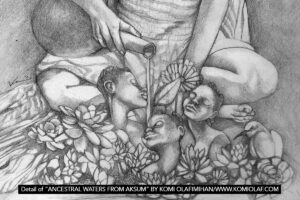
Mutual aid refers to a focus on building active reciprocal relationships to support each other in solidarity. Mutualist institutions, such as churches, unions, immigrant societies, co-ops, and mutual insurance aspire to implement this value on a regular basis.
Mutual aid derives its origins from the work of 19th-century anarchist theorists, such as Pierre-Joseph Proudhon and Peter Kropotkin. Mutual aid differs dramatically from charity in that its vision is not to help those who are less well-off, but rather for people to engage in reciprocal relationships, rooted in mutual benefit. A “needs and offers” exchange, in which participants list what they need and what they can offer, is perhaps the quintessential contemporary community-based, mutual aid institution.
During the COVID-19 pandemic, mutual aid networks emerged across the United States and globally. While some of these local networks have since receded, a revived mutualist movement has emerged that seeks to build on labor unions, faith-based groups, and cooperatives to develop vibrant networks of mutual care and support.















